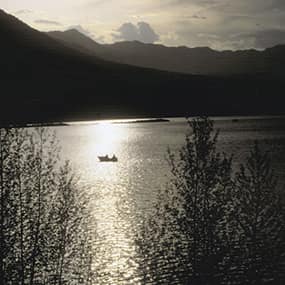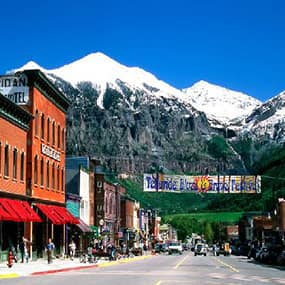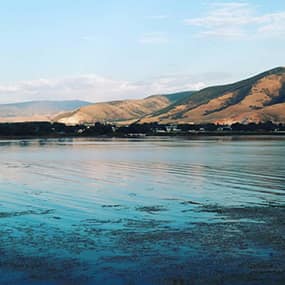Special Use Airports
There are many advantages afforded to those who fly on private jets, including the ability to take aircraft to airports not serviced by standard airline service, and to fly at times when normal scheduled service is not offered.
However, some airports (known as “special use airports”) and airspace are exceptionally challenging, and require special attention and training, and often impose stricter limitations for using those airports. Surrounding terrain, obstructions, complex approach or departure procedures, and security issues all create potential hazards to aircraft and flight crew… and consequently passengers. While steps to avoid these hazards and comply with said restrictions can usually be achieved, it takes specific crew training, familiarity and strict adherence to guidelines to maintain safe flight operations in and around these special use airports.
For scheduled airlines operating under FAA Part 121, the FAA has mandated that certain airports require special airport qualifications and that certain areas or routes, or both, require a special type of navigation qualification. While there is no specific regulatory requirement for FAA Part 135 operators, Jet Linx crew members are all trained to the same standard. Every time a Jet Linx crew member attends simulator training, they perform normal approach and departure procedures and abnormal situation procedures and emergency situations, in all types of weather
conditions, for these challenging airports to ensure they are prepared to operate the aircraft in and out under any circumstance.
While most special use airports are deemed such because of mountainous terrain, high elevation, or large obstructions, other factors can play a role in determining whether an airport is considered special use. Airspace restrictions surrounding the airport are a factor, as well as population and noise abatement restrictions at and around nearby airport.
Flying into or out of these airports requires an extra level of due diligence and additional flight planning to conduct the flight, but if conditions are satisfactory, Jet Linx pilots have the proper training and knowledge to operate safely at these airports.
In this article, we will examine a few of the most popular special use airports in the United States, and what mitigating factors pilots take into consideration when operating in and out of those areas.

ASPEN, CO (KASE)
At 7,383 feet elevation, Aspen is considered a very high elevation airport, but in addition, has surrounding mountains that reach over 14,000 feet. There is only one runway, and landings are only permitted in one direction, with takeoffs only permitted in the reverse direction. This creates a unique challenge due to wind speed and direction. If tailwinds are too strong in either direction, takeoffs and landings become unsafe, and the airport will become unusable. In the event of an emergency on takeoff, pilots are trained to fly a procedure leading them through the valleys surrounding the mountains until enough altitude can be gained to safely divert and land at a different airport. Weather minimums are much higher in Aspen due to surrounding terrain. The airport is a daytime use only airport, and the airspace surrounding it is very busy. Trips should be scheduled with a buffer to ensure the aircraft can still land during daylight hours, with anticipation of unforeseen air traffic delays.

EAGLE, CO (KEGE)
Eagle Airport sits at 6,547 feet elevation, and faces similar challenges to Aspen. One advantage with Eagle is that, although there is only one runway, both directions may be used for takeoffs and landings, so tailwind restrictions are typically not a factor. However, takeoff weights must be much lower in Eagle in order for the aircraft to climb above the surrounding mountains in the event of an emergency. Unlike Aspen, there are no suitable valleys to fly through, and so pilots must circle the airport and climb until the aircraft reaches an acceptable altitude to clear the mountains. Eagle is also a daytime use only airport and is susceptible to similar air traffic delays.

RIFLE, CO (KRIL)
Although the airport is at a slightly lower elevation of 5,537 feet, Rifle is still considered special use due to surrounding terrain, with mountains extending over 10,000 feet in height. However, Rifle is much less restrictive than Aspen or Eagle because the runway is situated to point in the direction of lower terrain, versus the other airports where the runways point toward taller mountains. This makes Rifle a preferred diversion airport for Aspen and Eagle in the event weather conditions or delays prevent landing at those airports. Rifle is suitable for night operations, and typically has fewer air traffic delays.

TELLURIDE, CO (KTEX)
One of the highest elevation airports in the continental United States, Telluride is 9,070 feet elevation, with surrounding mountains over 14,000 feet tall. There is only one runway, and like Aspen, landings are only permitted in one direction, while takeoffs are only permitted in the opposite direction. Unique to Telluride is the 1,000 feet drop-off at the end of the departure runway, so takeoff distances must be precisely calculated, and aircraft weights must be very low to be able to takeoff and climb out of Telluride. The airport is daytime use only.

SANTA MONICA, CA (KSMO)
Situated west of Los Angeles in the middle of a very crowded residential area lies Santa Monica Airport. There is a continuous noise ordinance in effect, restricting operations to the newest and quietest jets. The airport closes to all jet operations at 11 p.m. daily, and opens at 7 a.m. during weekdays and 8 a.m. during weekends. The runway is very short, only 4,973 feet in length, so landing and takeoff performance is challenging with heavy loads. Prior to departure, passengers should expect to be briefed on an unusual takeoff maneuver, which requires the pilots to climb at a very steep angle, before leveling off and reducing the power setting to limit noise. As the aircraft departs the residential area to the west and flies over the ocean, pilots will increase power to the engines and resume a normal climb. Due to political pressures, Santa Monica airport is planning to reduce their runway length in late 2017 to 3,500 feet which will make Part 135 jet operations difficult, if not impossible.

RONALD REAGAN (KDCA)
In addition to proximity to terrain, other factors can make an airport special use, such as airspace, security and noise considerations. One such airport is Washington National Airport, commonly referred to as DCA. Since the terror attacks of Sept. 11, 2001, DCA has required operators to be approved on a special security program (Jet Linx has this approval). Operators must carry an armed air marshal on each flight to and from DCA, and only certain airports are approved “departure gates” when traveling to DCA. Passengers and their luggage must be screened by the TSA (like going through security on an airline flight), pilots must be trained specifically on security and operational procedures, and arrival and departure slots must be arranged in advance of any trip. There is a permanent airspace flight restriction surrounding the Capitol, White House and other monuments in Washington, D.C., and so arrivals and departures are challenging.

HEBER CITY, UT (36U)
Nestled between two quite tall mountain ranges to the east and west, Heber City Municipal Airport is very popular for events like the Sundance Film Festival and the Deer Valley Ski Resort. The airport is daytime-use only, due to the terrain in the proximity. At 5,637 feet elevation, weather minimums are much higher at Heber City, and climb-outs sometimes require the aircraft to circle over the airport while gaining enough altitude to clear terrain. The runway is also narrow – only 75 feet wide – so flying in crosswind conditions are sometimes difficult at Heber City.

SOUTH LAKE TAHOE, CA (KTVL)
At 6,269 feet elevation, South Lake Tahoe airport is uniquely situated to the south of Lake Tahoe, with surrounding mountains reaching 10,000 feet to the south, east and west. With only one runway, landing at night is only permitted in the southbound direction, while night takeoffs are only permitted northbound over the lake.
OTHER SPECIAL USE AIRPORTS INCLUDE:
MONTROSE, CO
JACKSON HOLE, WY
SUN VALLEY/HAILEY, ID
TRUCKEE, CA
GRAND JUNCTION, CO
HAYDEN, CO
GUNNISON, CO
RENO, NV
Related Stories
My Home Base – Abigail Hensley, Jet Linx Indianapolis
In each edition of My Home Base, we feature a member of the Jet Linx team from across the country and showcase what they feel makes their Jet Linx location and their city special. In this edition, meet Abigail Hensley, Jet Linx Indianapolis Personal Flight Concierge.
READ MORE
My Home Base – Lorcan Kelly, Jet Linx Washington D.C.
In each edition of My Home Base, we feature a member of the Jet Linx team from across the country and showcase what they feel makes their Jet Linx location and their city special. In this edition, meet R. David Taylor, Jet Linx Washington Pilot.
READ MORE
My Home Base – Christof Pignet, Jet Linx National Operations Center
In each edition of My Home Base, we feature a member of the Jet Linx team from across the country and showcase what they feel makes their Jet Linx location and their city special. In this edition, meet Doug Veys, Jet Linx Recruiter.
READ MORE
Related Stories
My Home Base – Abigail Hensley, Jet Linx Indianapolis
In each edition of My Home Base, we feature a member of the Jet Linx team from across the country and showcase what they feel makes their Jet Linx location and their city special. In this edition, meet Abigail Hensley, Jet Linx Indianapolis Personal Flight Concierge.
READ MORE
My Home Base – Lorcan Kelly, Jet Linx Washington D.C.
In each edition of My Home Base, we feature a member of the Jet Linx team from across the country and showcase what they feel makes their Jet Linx location and their city special. In this edition, meet R. David Taylor, Jet Linx Washington Pilot.
READ MORE
My Home Base – Christof Pignet, Jet Linx National Operations Center
In each edition of My Home Base, we feature a member of the Jet Linx team from across the country and showcase what they feel makes their Jet Linx location and their city special. In this edition, meet Doug Veys, Jet Linx Recruiter.
READ MORE

Contact Us
